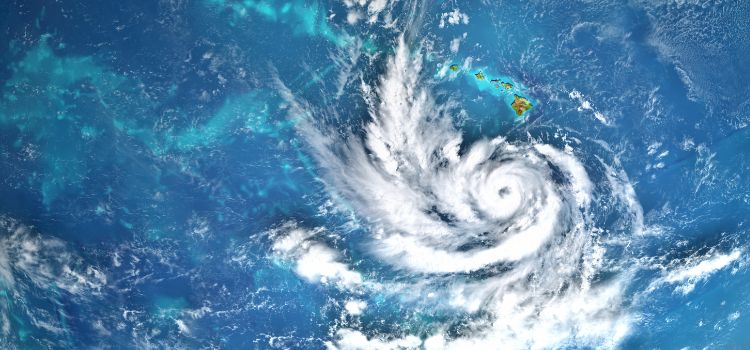One of the biggest questions on people’s minds is: “Do hurricanes clean the ocean?” Well, the answer depends on the storm you’re talking about.
Contents
Hurricanes clean the ocean of large amounts of debris and remove a significant amount of oxygen from the water. It takes decades or years for the sea to recover from a hurricane. And the cleanup process doesn’t end there.
How do hurricanes help the ocean?
Although many people fear hurricanes for their negative impact on marine life and ecosystem, they actually help it flourish in many instances. Hurricanes can bring massive waves and storm surges that can wash up stranded marine life.
These waves and storm surges can damage the habitats of many species of fish and other aquatic life 300 feet below the surface. They can also topple sensitive sea turtle nests. During hurricanes, many fish die because they are washed out of their homes by violent wave action.
The resulting pollution from ocean life can pollute coastal waters, clouding the water and killing other marine animals. Even free-swimming animals like sharks and manatees can be stranded by the sudden drop in air pressure.
Hurricanes also help balance ocean temperatures by stirring up the water. They also contribute to the thermohaline circulation, which distributes heat between the poles and equator.
This warm wealth is then dispersed across the planet by tropical cyclones. Hurricanes are responsible for this balance. They are a significant part of the climate and play a vital role in cleaning the ocean. But hurricanes are also responsible for warming the planet.
Although scientists have long been interested in the impact of climate change on hurricanes, little has been done outside the Atlantic basin. As oceans warm, hurricanes will become more powerful, a real threat to coastal communities.
Climate scientists have urged us to be prepared for this reality, as we will soon be witnessing hurricane season. Despite our growing concern, hurricanes have been an essential part of our history.
In addition to their beneficial effects, hurricanes have the power to destroy coastal ecosystems. Hurricanes uproot trees and disrupt the hydrology of the area. The powerful winds and water force of Hurricane Agnes reshaped the hydrology of the Chesapeake Bay area by eroding the mouths of river tributaries and transporting vast amounts of sediment upstream.
Furthermore, hurricanes can also spawn new islands by accumulating coral skeletons. As a result, entire reef blocks can be displaced and deposited in shallow waters, posing a threat to marine life.
The role of the ocean in a hurricane
The warm waters of the ocean aid in the formation of tropical storms. Warm water in the ocean can supercharge thunderstorms, leading to the formation of hurricanes. Warm water also causes the storms to grow and spread, and this warm water then supplies energy to the hurricane.
Tropical storms develop over warm ocean waters, and hurricanes and typhoons can be as large as hundreds of miles. Hurricanes often damage coastal areas and generate billions of dollars in damages every year.
Hurricanes can drastically alter marine ecosystems. They change seafloor habitats, adjust the water’s oxygen and salt levels, and disrupt ocean life. As hurricanes move northward, they mix the warm surface waters with cooler water below, creating rough undercurrents and shifting sands.
As a result, these changes in water quality can disrupt coral growth and destroy shellfish beds. Hurricanes also disrupt the ecosystems of marine life, but large animals aren’t as affected.
In addition to influencing hurricane intensity, ocean heat content is essential to tracking hurricanes over land. Satellite data can measure the ocean’s heat content, but the ocean’s salinity is not included in current forecasting tools.
Low sea surface salinity, which occurs due to significant river outflow, may create a barrier layer, separating the upper ocean from the lower. A barrier layer can help intensify passing hurricanes, and low salinity can make it difficult for a storm to develop a landfall.
While hurricanes can disrupt coral reproduction, they are also important for marine ecosystems. Some corals reproduce rapidly by asexual mechanisms, while others reproduce slowly through sexual processes.
As a result of the hurricane, corals and other marine life cannot move, and storms destroy the habitat of submerged aquatic plants, which shelter many aquatic species. In turn, these changes disrupt the food chain, affecting fish reproduction.
New research indicates that the coral reef ecosystem is vital in a hurricane. The ecosystem protects shorelines and sustains biodiversity. But different coral reefs are impacted by hurricanes differently.
For example, after Hurricanes Maria and Irma hit the US Virgin Islands, the coral reefs off the coast of St. John have decreased by up to 4%. Although they can adapt to these storms, the reef communities have been degraded.
What about ocean life?
Hurricanes do a lot more than cause damage. They alter marine ecosystems by churning the water and mixing warm surface water with cooler deep ocean waters. Wildlife that lives in storm-tossed waters often detect the approaching storm and flee for higher ground.
Hurricanes also obliterate the entire species. However, after a storm, wildlife can return to their normal behavior. The question is, what is ocean life like after a hurricane?
In addition to the destruction caused by hurricanes, some species benefit from them. For example, during hurricane season in Mississippi, 90% of Mississippi Sound fishing boats were destroyed after Hurricane Katrina. Dolphins thrived without the boats in the water.
Hurricanes also change ecosystems. Feral chickens have spread on the Hawaiian island of Kauai, and descendants of domesticated chickens that escaped during hurricanes have spread. Hurricane Florence also overwhelmed hog waste lagoons. As a result, pig waste may enter our water supply.
The storms also cause massive waves, up to 18 meters in height. These waves mix warm surface water with colder ocean water, disrupting the marine ecosystem. Hurricanes can also cause changes in the salinity of ocean water, resulting in dangerous conditions for sea life.
Some animals, like sharks, will avoid these storms and swim deeper to escape the storm. Hurricanes also cause massive amounts of dead fish and water. The changes in salinity and temperature will cause damage to marine life for months or even years.
As a result of these changes, the abundance of some organisms in the ocean may be drastically reduced. This may take years or decades before the organisms can return to their normal levels.
Hurricanes are also known to deplete the ocean’s oxygen and salinity levels. The effects of a hurricane on marine ecosystems are long-lasting and complex. So, what is ocean life like after a hurricane?
Hurricanes change the environment and radically alter marine ecosystems. Hurricane waves disrupt ocean habitats 300 feet below the surface. They may also topple coral, a significant structure source in nearshore reefs.
Hurricanes also damage animals that are fixed to the ocean floor. Free-swimming animals may also get caught in undercurrents. This causes significant damage to marine life. It is crucial to study what happens to marine life after hurricanes.
Conclusion
In conclusion, hurricanes cause dramatic changes in the ocean environment. These storms can cause changes in salinity and temperature. Hurricanes can cause massive destruction of coral reefs and changes in marine habitats, species abundance, and species composition in nearshore ecosystems and on the ocean floor.

